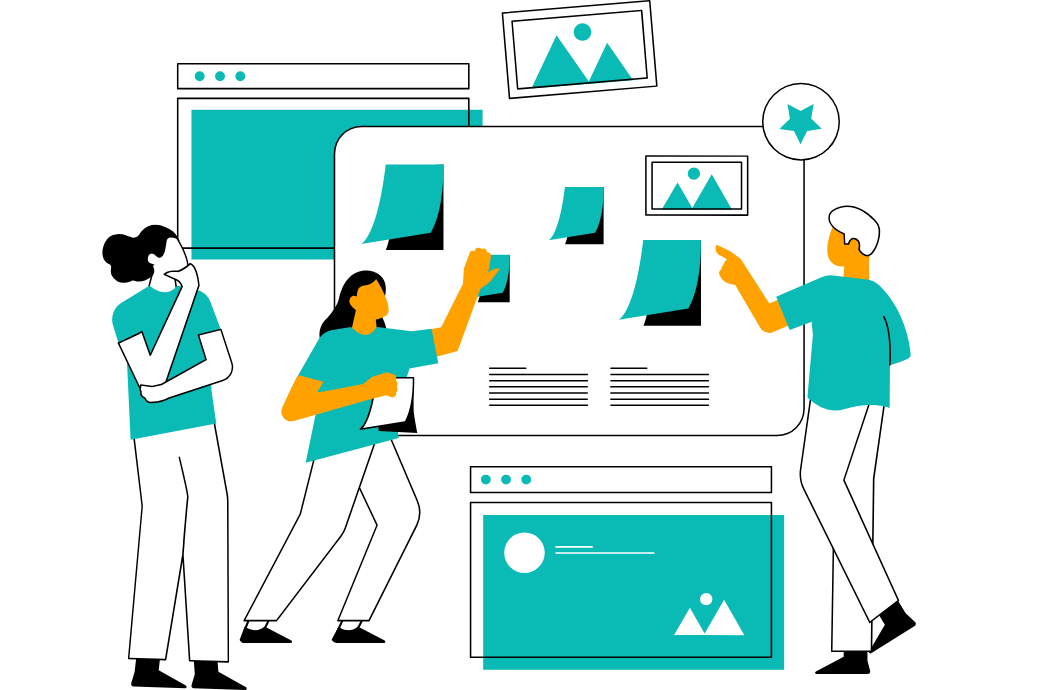Migrating from one digital asset management platform to another is often thought of as a daunting experience, but it doesn’t have to be. If you’re migrating, it’s because your older solution is no longer working for your team, so moving to a new solution is an exciting time. While there are a lot of steps to figure out, it’s also an opportunity to realign your team and processes to better meet your requirements going forward. To ensure a successful migration, read our cheat sheet below. If you’re wondering what makes us qualified to write this post, know that over 83% of Orange Logic customers have migrated to our platform from other solutions.
Understanding Your Migration:
Before initiating the migration process, it’s imperative to have a comprehensive understanding of what you’re planning to migrate. Know what assets, permissions or relationships you intend to migrate, and the timeline you’re working with. If there is a deadline for migrating off of your existing solution, make sure your new vendor is aware of this and ensure your team can get all of the assets and data you need from your previous system in time to make the switch.
Asset Assessment:
Understanding the assets you’re migrating is crucial for a successful transition. Begin by assessing the number and types of assets you have, along with their current storage locations. Determine whether you have access to these storage facilities and identify any associated metadata, such as CSV or XML, sidecar, or embedded metadata. This comprehensive understanding will help streamline the migration process and ensure that all necessary components are accounted for. If you have expectations around marrying external data sources to your digital assets, make sure you’ve talked to your new vendor and if possible, provided a sample of assets and data.
Additionally, consider any unique relationships between assets or assets and data that you’re hoping to preserve, and ensure these are communicated clearly to your vendor. Again, providing test assets and/or data can aid in preserving these relationships and help you better predict ingestion timelines during the migration process.
Preparation and Planning:
Prepare for your migration by thinking ahead and considering your goals. If you’re aiming to tidy up your collection in your new DAM, remember that deduplication takes time. Understand that not everything needs to be moved over; some assets may no longer hold value, so consider archiving them or moving them to cold storage. If possible, reach out to your old vendor to see if they can assist with transferring your assets and data in a format that’s most useful for your new vendor to minimize any disruptions to your migration.
Other Considerations:
If you’re working with a consultant or outside implementation team, have a kickoff call with all of the teams to ensure people aren’t duplicating efforts and that everyone is aligned on timelines and goals. This will also guarantee everyone knows their role in the DAM migration process and allows you to be certain people aren’t duplicating efforts.
Tips for Migrating
Define Clear Objectives:
Before diving into the migration process, define clear objectives aligned with your organization’s overarching goals and strategies for a new digital asset management platform. Make sure everyone on your team can answer the question, “Why are we moving to a new DAM, what is this going to solve?” Reflect on past experiences; what worked well in your previous solution, and what led to its downfall? Understanding these factors is crucial for setting the right course in your new DAM migration. Whether it’s streamlining workflows, improving collaboration, or enhancing brand consistency, clarity on objectives will guide your migration journey and set the stage for measurable success.
Involve Stakeholders:
Effective stakeholder engagement is crucial to the success of any DAM implementation. Involve key stakeholders from different departments to ensure the selected solution meets the diverse needs of your organization. By fostering collaboration and gathering input from stakeholders across the board at early stages, you can create a unified vision for the DAM platform and ensure widespread adoption and support throughout the organization.
Understand Your Taxonomy:
Metadata forms the backbone of efficient asset management, guiding users to quickly search, discover, and retrieve digital assets. AI tools are helpful, but your team should still have a well-thought out taxonomy. It’s crucial to ensure that your new vendor can implement successful components of your previous taxonomy while offering additional tools for improvement. Reevaluate your taxonomy and folder structure; don’t simply replicate what worked or failed in your previous DAM. Adapt and evolve based on past learnings, new tools, and future objectives.
Understand Use Cases Around Permissions and Digital Rights:
Protecting sensitive assets and managing user access are paramount in a successful DAM implementation. As you migrate, be mindful of how permissions and digital rights requirements may influence other decisions in your DAM, such as metadata tags, organization, workflows, and how you build out your Portals to allow or prevent access. Document your digital rights objectives to ensure your new vendor understands what a successful permissions structure will mean to your team. Consider implementing more powerful rights tools such as granular permissions and advanced watermarks, features your previous system might have lacked.
Integrations:
Maximize the value of your DAM investment by seamlessly integrating with tools and systems your team needs to complete its work. Assess which integrations are essential and which are redundant. Prioritize native functionality for essential workflows while leveraging integrations for specialized features, striking the right balance between efficiency and interoperability.
In conclusion, migrating to a new digital asset management solution presents a unique opportunity to revitalize your organization’s asset management practices and drive sustainable growth and innovation. By prioritizing strategic planning, stakeholder engagement, user-centric design, and continuous improvement, you can navigate the migration journey with confidence and ensure long-term success for your DAM platform.
To learn more about how Orange Logic can help, or our impressive record in successfully migrating enterprise clients to our platform, schedule a call today!
Publisher: Source link











